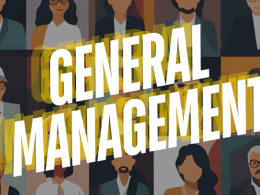Are you caught in the perpetual juggling act between the demands of your work and your personal life?
Are you striving to find that elusive equilibrium in our fast-paced, ever-connected world?
Do you sometimes feel the ominous shadow of burnout creeping closer, threatening to consume your precious well-being?
Feeling the burnout creeping in?
Well, you’re not alone. The pursuit of work-life balance has become an increasingly hot topic in recent years. In this blog, we’re going to embark on an exploratory journey.
Top 10 Strategies for Work-Life Balance and Burnout Prevention
We’ll dive deep into the strategies that are crucial for safeguarding your work-life equilibrium and, more importantly, for keeping the burnout beast at bay. It’s a journey that promises a more balanced and fulfilling life, so let’s begin.
1. Prioritize Self-Care
Prioritizing self-care is the foundational pillar of achieving a harmonious work-life balance. It entails recognizing the significance of physical well-being in maintaining a balanced life. Self-care begins with ensuring you get adequate sleep to rejuvenate your body and mind. A well-rested individual is better equipped to navigate the challenges of both their professional and personal life.
Additionally, paying attention to your dietary habits and maintaining a balanced diet is paramount. The nutrients you consume directly impact your energy levels and overall health. Regular exercise is another essential component of self-care. Engaging in physical activities not only enhances your physical health but also contributes to better mental well-being. It reduces stress, elevates mood, and fosters a positive mindset.
2. Set Clear Boundaries
Establishing clear boundaries is a fundamental strategy in attaining work-life balance. These boundaries are like a protective shield between your professional and personal life. To set these boundaries, you need to define specific working hours. When your workday concludes, it is imperative to fully disconnect from your professional responsibilities.
This disconnection allows you to be mentally and emotionally present in your personal life. Boundaries serve as a safeguard against work-related stress and the intrusion of professional duties into your personal time. When you establish these boundaries, you are declaring your commitment to maintaining equilibrium.
3. Learn to Say ‘No’
Mastering the skill of saying ‘no’ is a challenging yet indispensable aspect of maintaining a work-life balance. The allure of overcommitting is ever-present, but it is also a direct path to burnout. To navigate this challenge successfully, it is vital to conduct regular assessments of your workload and commitments.
Politely declining additional tasks when your plate is already full is an act of self-preservation. It demonstrates your commitment to maintaining a balanced life and underscores your ability to manage your priorities effectively.
4. Time Management
Effective time management stands as a linchpin in your pursuit of work-life balance. Employing tools such as calendars, to-do lists, and time-blocking techniques is essential to organize your workday efficiently. These tools enable you to prioritize tasks and allocate time for personal activities and relaxation.
By managing your time judiciously, you create space in your schedule for both your professional and personal life. Time management empowers you to structure your day in a way that ensures you fulfill your responsibilities without compromising your well-being.
5. Embrace Flexibility
Flexibility is a paramount asset in achieving work-life balance, especially in the modern world of remote work and flexible schedules. Embracing these opportunities grants you the freedom to adapt your work hours to your personal life.
It fosters an environment where your career serves your overall well-being, rather than the other way around. By leveraging flexibility, you can strike a harmonious chord between professional and personal commitments.
6. Delegate Tasks
The act of delegating tasks at both work and home plays a significant role in preventing burnout. It is perfectly acceptable to seek assistance or share responsibilities with colleagues or family members.
Delegating not only lightens your load but also reduces stress. It allows you to focus on your core responsibilities while trusting others to handle supplementary tasks.
7. Avoid Multitasking
Multitasking may appear to be a route to heightened efficiency, but it often leads to burnout. A more effective approach is to concentrate on one task at a time. By giving your undivided attention to each task, you increase productivity while simultaneously decreasing stress.
The quality of your work improves, and you become better equipped to manage your professional and personal commitments effectively.
8. Regular Breaks
Incorporating regular breaks into your workday is essential for maintaining balance. Short breaks offer opportunities to refresh your mind, preventing mental exhaustion and enhancing overall productivity.
During these intervals, you can engage in activities such as stretching or meditating to alleviate stress. The mere act of disconnecting briefly from work allows you to recharge, helping you navigate your responsibilities more effectively.
9. Communication
Open and honest communication serves as a linchpin in achieving work-life balance. Both in the workplace and in personal relationships, discussing your needs and expectations is crucial. Communicating your work-life balance requirements with your employer and loved ones is essential.
It paves the way for mutual understanding and allows you to find common ground. By expressing your expectations and actively listening to theirs, you can build a support system that facilitates your journey toward equilibrium.
10. Assess and Adjust
Work-life balance is not a static state but an evolving dynamic. Life circumstances are subject to change, and your strategies must adapt accordingly. Regularly assessing your work-life balance and making necessary adjustments ensures you remain aligned with your goals.
Be flexible and open to change. As your career, personal life, and priorities evolve, your strategies should evolve with them.
By delving into these elaborations of essential work-life balance strategies, you gain a deeper understanding of how to implement these practices effectively.
Maintaining work-life balance and preventing burnout is a continuous process that requires dedication and a commitment to your overall well-being.
Incorporate these strategies into your daily life, and you’ll find yourself better equipped to lead a fulfilling and balanced existence, both professionally and personally
Ready to master the art of General Management and learn the strategies to excel in your career while maintaining that precious work-life balance?
Join Accredian’s General Management Course in partnership with XLRI, today and unlock a world of opportunities.
 Pin
PinExplore more insightful blogs like this one, delving into the secrets of success. Your journey to a balanced and successful life begins here.






